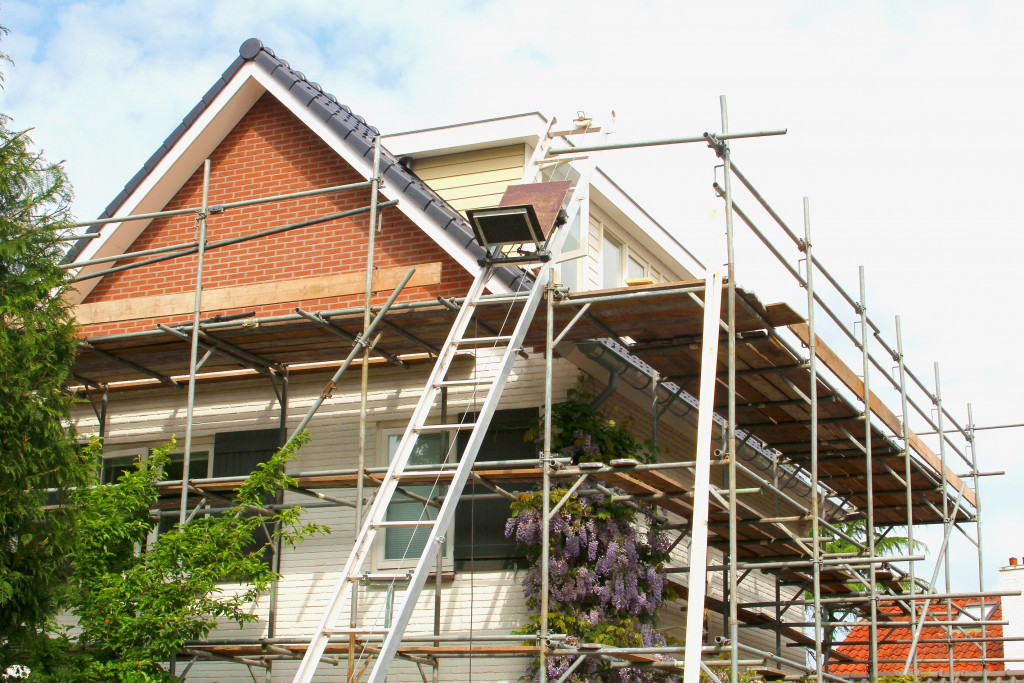- Understanding building codes, zoning laws, and environmental regulations is critical for safe, legal home construction.
- Selecting a reputable contractor significantly contributes to the project’s efficient execution and overall quality.
- Ensuring proper cleanup post-construction aids in safety, final inspection, and project completion.
- Successful home construction requires detailed planning, understanding of responsibilities, and attention to detail.
As homeowners, it is crucial to take home construction seriously as it not only ensures the safety and longevity of the home but also contributes to financial stability. According to the National Association of Home Builders, poor construction can lead to significant repair costs, estimating that homeowners spend an average of $9,081 annually on home improvements and emergency repairs. In addition, the U.S. Census Bureau reported that 80% of the nation’s 137 million homes are now at least 20 years old, and 40% are at least 50 years old. This aging housing stock emphasizes the importance of quality construction to withstand the test of time and reduce long-term maintenance costs.
Still, the project will require heavy preparations and responsibilities to be taken by the homeowner. Here are a few you might need to know or do to ensure a successful home construction project:
Understanding Home Building Code

Understanding your local building code is essential, as these rules ensure safety and adherence to regional construction standards. They cover many aspects, including structural integrity, fire safety, ventilation, and energy efficiency. For example, the building code might require homes to have reinforced roofs and doors in hurricane-prone areas.
Zoning Laws
Zoning laws govern how a property can be used. These laws can dictate the type of construction permitted, the positioning of the building on the lot, and the structure’s height. For instance, a residential area may have restrictions on building commercial installations, or a historic district may have rules preserving architectural styles.
Environmental Regulations
Construction projects often need to comply with environmental regulations. These restrictions protect natural resources and ensure sustainable building practices. For example, certain areas might have rules on tree removal, or there may be limitations on construction methods that could affect local wildlife.
Accessibility Requirements
Most areas have regulations ensuring that buildings are accessible for people with disabilities. These rules might dictate including features like wheelchair ramps, elevators, or specific door widths. Ignoring these regulations can lead to penalties and may necessitate costly modifications.
Construction Permits
Of course, obtaining the necessary construction permits from your local municipality before beginning any work is essential. These permits require detailed plans and may need approval by multiple agencies, such as fire departments or health inspectors. Failure to secure proper licenses can result in fines or court orders to stop construction.
Choosing a Contractor

Choosing a competent and reliable contractor is a pivotal step in ensuring the smooth execution of your home construction project. Contractors execute the physical construction of your home and manage the project’s day-to-day operations. They coordinate with vendors and tradespeople, keep the work on schedule, and ensure the construction adheres to the plans and building codes.
An experienced contractor can foresee typical problems that might occur during construction, thus preventing costly delays or mistakes. They can also provide valuable advice on materials and techniques that can enhance the quality and functionality of your home. As a result, choosing a reputable contractor can save time, money, and stress in the long run.
Choosing the right contractor may involve researching their credentials, checking references, and obtaining multiple bids to compare prices. It is also essential to have a detailed contract outlining the scope of work, budget, timeline, and procedures for resolving disputes or plan changes.
Ensure Proper Cleanup After
Ensuring proper cleanup after a home construction project is not just about maintaining aesthetic appeal; it’s an essential step that impacts safety, efficiency, and overall completion. Leftover debris, such as wood shavings, nails, or chunks of concrete, can pose a hazard to homeowners and construction workers. It can also prevent a thorough inspection of the finished work, possibly masking underlying issues that need immediate attention.
To ensure a proper cleanup, homeowners can incorporate a clause in the contract requiring the contractor to tidy up the construction site daily and do a comprehensive cleanup at the end of the project.
However, homeowners could consider hiring professional construction cleaning services for a thorough and professional cleanup. These services specialize in post-construction cleanup and have the equipment and expertise to handle debris removal, dusting, vacuuming, and all other aspects of construction cleanup. They can provide an extra assurance that the new home is spotless, safe, and ready for occupancy.
Final Thoughts
Home construction is a significant investment, and homeowners have a vital role in ensuring its success. By understanding responsibilities such as building codes, zoning laws, environmental regulations, accessibility requirements, and proper cleanup after the project’s completion, homeowners can contribute to the quality and longevity of their new homes. Additionally, choosing a reputable contractor can alleviate stress and save time and money in the long run. With careful planning, a thorough understanding of responsibilities, and attention to detail, homeowners can achieve their dream home and create a safe and comfortable living space for years.

